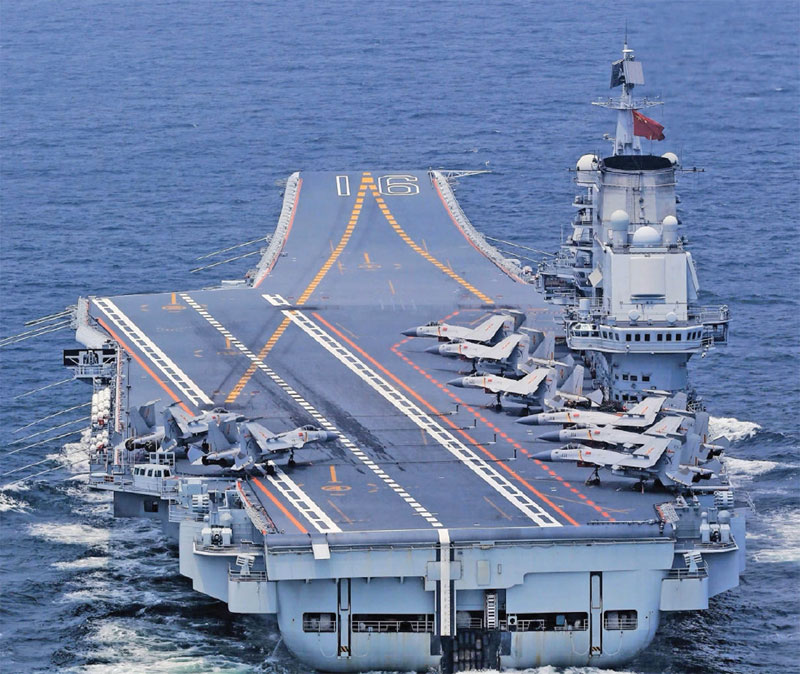How the Chinese military acquired cutting edge tech, from right under the West’s nose
Prasun K. Sengupta
Apart from officially procuring a diverse array of weapon systems from the West between 1980 and 1989, China launched large-scale covert operations aimed at securing access to military-technical and military-industrial expertise, several of which had continued till 2004 despite the imposition of international embargoes on such transactions after the June 1989 after the Tiananmen Square massacre in Beijing. Such operations played a vital role in enabling China’s military forces to take the 20-year leapfrog from the 1960s-era military industrial complex that had existed till the mid-1980s.

Field Artillery Enhancements
In terms of both external looks and performance parameters, NORINCO of China’s ASH-1 155mm/45-cal towed howitzer and the Bharat-45 166mm/45-cal towed howitzer from India’s Kalyani Strategic Systems Ltd (KSSL) are identical. And that’s because both are derivatives of the baseline GC-45 155mm/45-cal towed howitzer that was originally designed by the Canada-based Space Research Corp (SRC), which was created and owned by the legendary ballistics expert Dr Gerald Bull, since the mid-1970s.
The GC-45’s general design emerged after two decades of work by Dr Bull with fin-stabilised, extended-range full-bore (ERFB) ammunition: a pointed shell with much lower drag at supersonic speeds. For long-range applications Dr Bull had added a base-bleed system (originally invented in Sweden) that could be screwed onto the standard shell, as well as an even longer-range artillery projectile with a rocket booster. The GC-45 towed howitzer designed by Dr Bull to fire such projectiles had a 23,000 cubic cm (1,400 cubic inches) chamber, a 45-calibre rifled barrel with 1/20 right-hand twist fitted with a conventional muzzle-brake. Its breech was a conventional screw with interrupted thread.
In 1977, Dr Bull came in touch with South Africa’s state-owned ARMSCOR holding company, which subsequently designed a new mobile mounting that was able to handle the increased recoil. It used a sole-plate to lift the gun-carriage to take the four wheels off the ground. The chassis had the option of being powered by a small diesel engine acting as an auxiliary power unit, driving the hydraulics that could set up the howitzer in two minutes, and move it short distances. The resultant 155mm/45-cal towed howitzer became known as the G-5. Meanwhile, Dr Bull outsourced series-production of 155mm ERFB projectiles from the Spain-based Santa Barbara under a USD30 million contract. These were later shipped directly from Spain to South Africa in order to avoid the then prevailing international arms embargo against South Africa. The G-5 entered service in 1982.
In 1982 itself, NORICUM, the subsidiary of Austria’s VOEST-Alpine AG, purchased the design rights to the GC-45 after SRC moved to Brussels from Canada. NORICUM made a number of design re-engineerings to the baseline GC-45 design, and as a result the GHN-45 155mm/45-cal towed howitzer emerged. First export customer of this howitzer was Iraq, which placed a USD300 million contract for 110 GHN-45s, along with 41,000 rounds of 155mm ammunition whose production was outsourced by Dr Bull’s SRC from Belgium-based PRB. Deliveries were made in 1984 and 1985. The number of GHN-45s supplied to Iraq was eventually 200.
Since both Iran and Iraq were under an UN-imposed arms embargo at that time, the GHN-45s were shipped to Iraq via Jordan. Meanwhile, three years earlier, in 1980, in response to an engineering contract awarded to SRC by China’s state-owned China North Industries Group Corp (NORINCO), Dr Bull began fabricating the155mm/45-cal GC-45’s prototypes with the help of Santa Barbara of Spain. By 1983 these were successfully field-tested by China’s PLA Ground Forces (PLAGF) in the desert region of Baotou in the Inner Mongolia Autonomous Region, following which NORINCO began series-producing them under the designation PLL-01.
Separately, Dr Bull also devised for NORINCO a 155mm/45-cal upgrade package for the Type-59 towed 130mm howitzer (clone of Russia’s M-46) and in PLAGF service it was known as the WA-021.
NORINCO’s 674 Factory (Harbin First Machine Manufacturing Ltd Co), 123 Factory (Heilongjiang Hua’an Industry Group Co) and 127 Factory (Tsitsihar Heping Machine Shop) were the principal production authorities of both PLL-01 and WA-021 and their related ammunition families since 1987. These were the PLA Army’s first field artillery howitzers to adopt the NATO-standard 155mm barrel instead of the Soviet-/Russian-standard 152mm. For export, the PLL-01 later became known as the ASH-1, with 18 of these being sold to Algeria in 2014 along with NORINCO-supplied Type 702D meteorological radars, Type 904-1 weapon locating radars, and Battalion/Battery Command Post vehicles.
In 1986, NORICUM was renamed NORICUM Maschinenbau und Handels GmbH, and in October 1989 it was renamed again as Maschinenfabrik Liezen AG (MFL). Now, fast-forward to 2012 when India’s KSSL imported from MFL a service version of the GHN-45 (which has since been renamed as the Bharat-45), and at the same time also bought, knocked down and transported to India an entire field artillery industrial production facility from RUAG of Switzerland.
From Ukraine, the PLAGF in 2001 secured the intellectual property rights of the MANDAT-B1E jamming system, which is designed for the detection, direction finding and analysis of signals used in radio communications, for identifying the coordinates of hostile radio beaming sources and jamming communication channels within the 1.5-1,000 MHz working frequencies range. Several of these are now deployed all along the Sino-Indian Line of Actual Control (LAC). Also sold by Ukraine were the production-licences for the LIMAN ground-radio jammers, mobile GPS jamming systems, and road-mobile troposcatter-based communications relay systems like the TS-504 and multi-point TS-510/GS-510 systems, which are re-engineered versions of Ukraine’s R-423-1 Brig-1 troposcatter system.
You must be logged in to view this content.

